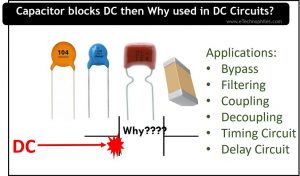Last updated on April 3rd, 2024 at 12:55 pm
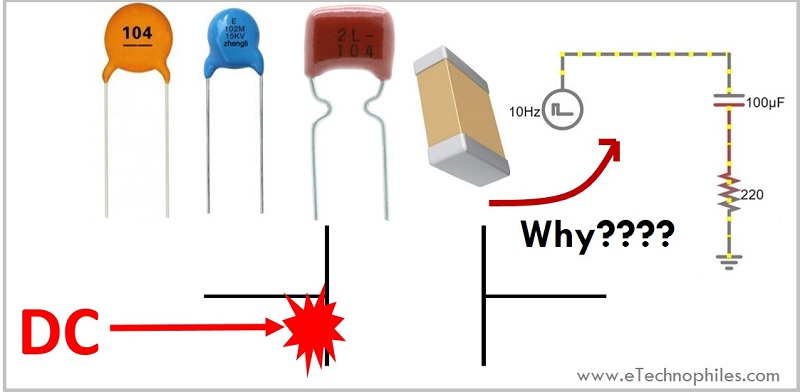
Table of Contents
If a capacitor blocks DC, then why is it used in DC circuits? The question should not be why but how! Capacitors have many applications in DC circuits like bypassing, filtering, coupling, and decoupling. So using this property of blocking DC and passing AC, it is used for different applications.
It depends on the way it is connected to the circuit, capacitor value, signal frequency, voltage, and several other factors. For example, in a rectifier circuit, a big electrolytic capacitor is used in parallel with the load to smoothen out the ripple voltage.
Another way to look at this is- since it pass the AC signal, the noise or ripple present in the pulsating DC gets bypassed to the ground by this filter capacitor. And since it blocks DC, the DC voltage remains unchanged across the load.
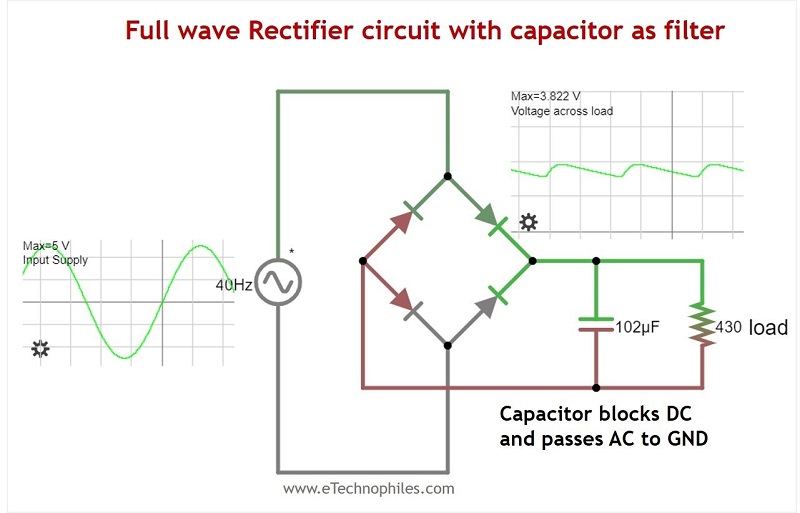
In the above example, this DC blocking property of the capacitor is used as a major advantage.
A capacitor does not block DC immediately!
Even when it is directly connected to a DC source, it takes some time for it to charge. And in order for it to charge current must flow through the circuit.
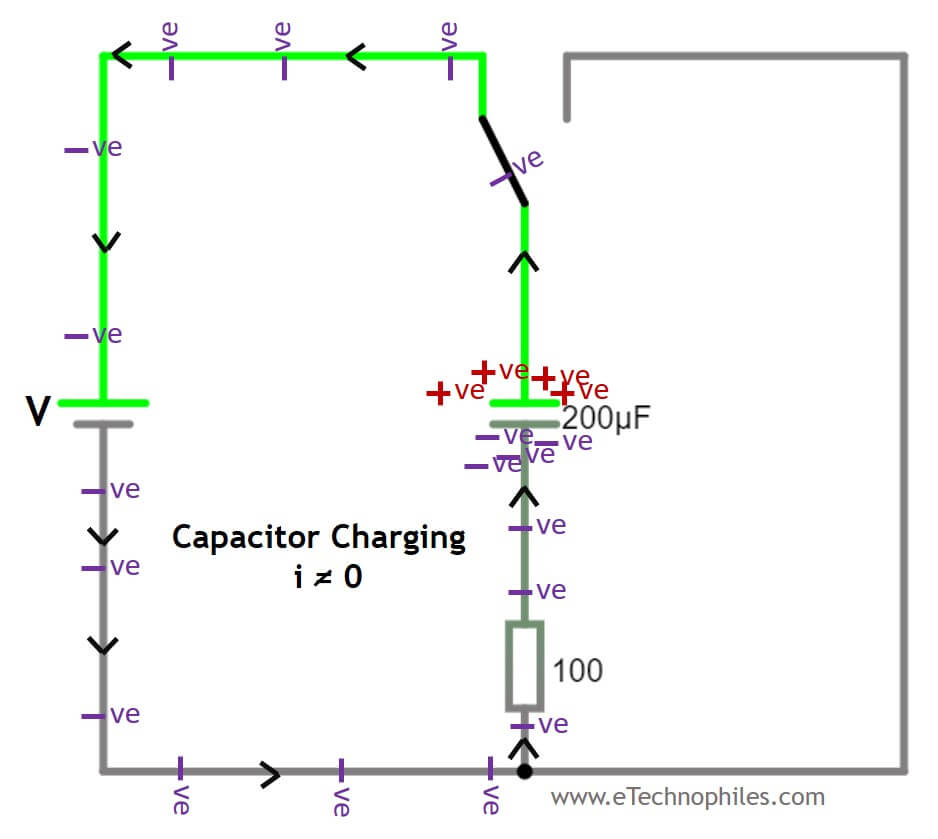
So current flows through the circuit and when it gets charged to the source voltage level, no more current passes through it. Now this stored charge has nowhere to go and this is when we say that the capacitor is blocking DC.
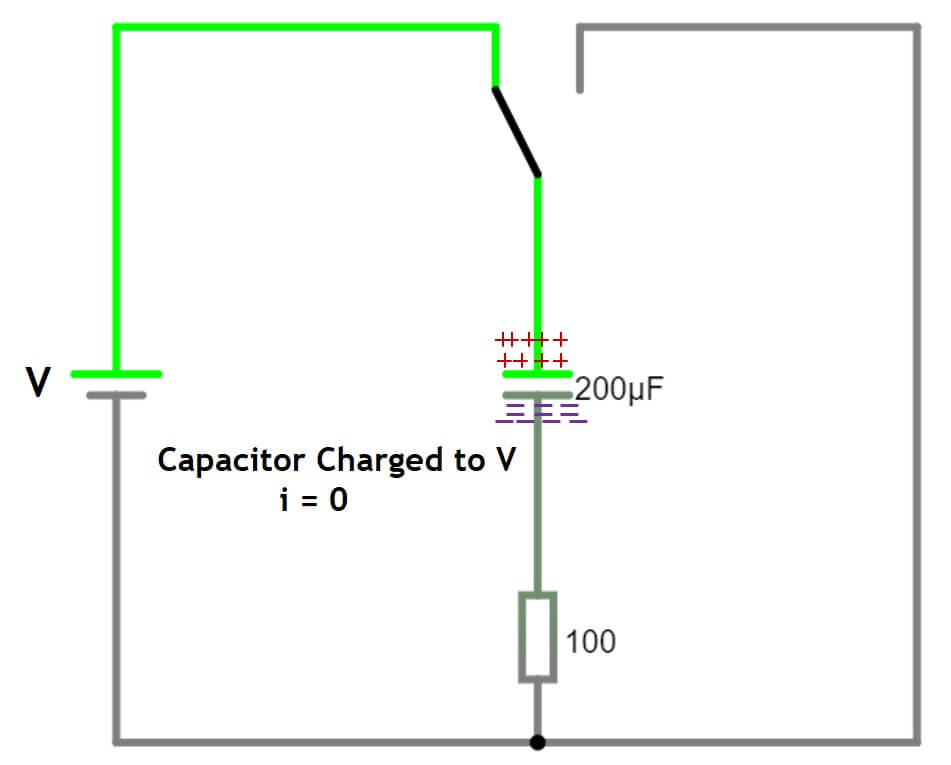
This transient property is used to create delay, timing, low-pass, and high-pass circuits. So to say that if a capacitor blocks DC then why is it used in DC circuits is not a wise question.
See the RC circuit given below.
RC circuit
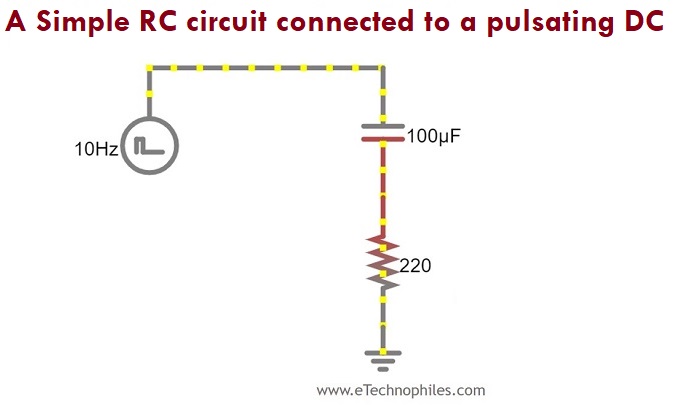
When connected in series with the resistor, the time it takes to charge the capacitor depends on the capacitance and resistance value. The voltage across the capacitor varies with time depending on the R and C values. Similarly discharging through the resistor creates a different voltage waveform.
If repeated several times, depending upon the charge-discharge frequency, R and C a simple delay circuit can be created which creates a triangular waveform if connected to a pulsating DC.
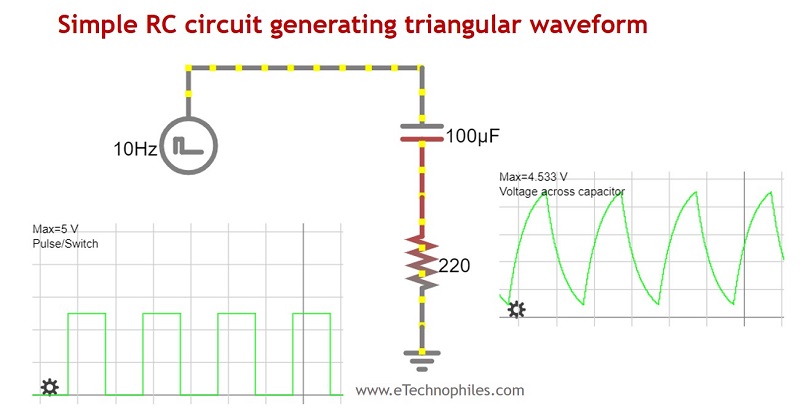
The capacitor and resistor are also used to create low-pass and high-pass filters. Now depending upon which is connected first and from where the output is taken, either of the filters is formed.
A capacitor in a low pass filter
When connected after the resistor, it bypasses the high-frequency signals to the ground and allows low-frequency signals to pass. This is the basic principle of a low-pass filter.
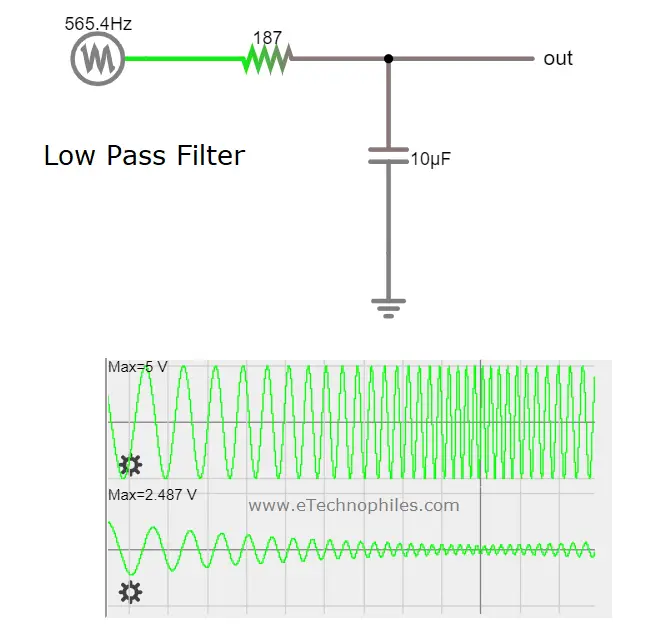
By varying the R and C values, different cutoff frequencies can be achieved. This type of circuit is used to reduce noise and unwanted signal interference in a circuit.
A capacitor in a high pass filter
When connected before the resistor, the capacitor blocks low-frequency signals and allows high-frequency signals to pass. This is the basic principle of a high-pass filter.
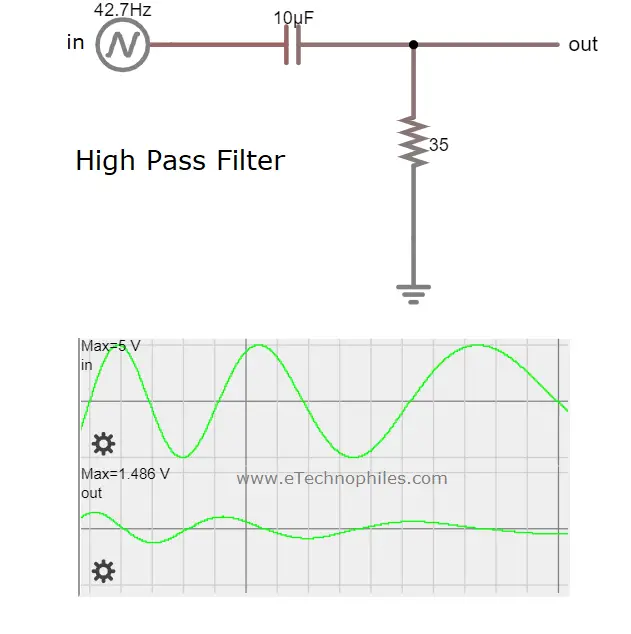
By varying the R and C values different cutoff frequencies can be achieved. This type of circuit is used to get rid of any unwanted low-frequency signals present in a circuit.
Some other applications where capacitors are used are given below:
- Oscillating circuits
- As an energy storing element and giving it back when required by the circuit.
- Surge bypass circuits
- Signal processing
- Some ultracapacitor modules are being used in EVs
Conclusion
Capacitors are used in DC circuits for a variety of reasons. Their ability to block DC while allowing AC to pass makes them ideal for use in bypass, filtering, coupling, and decoupling applications.
The transient nature of capacitors also allows them to be used in delay and timing circuits. Varying the values of the capacitor and resistor elements can yield different results for each application.
